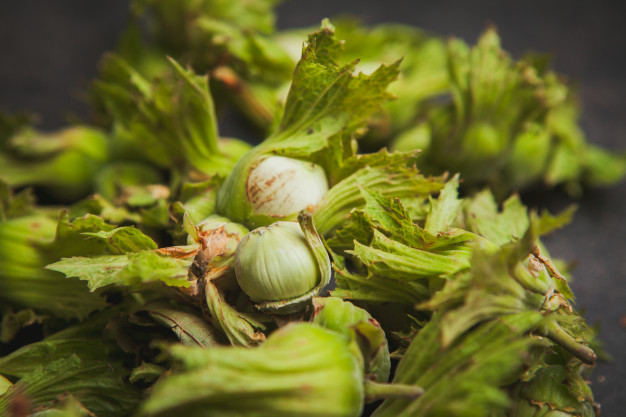Original story in Capital Press
Photo: Willamette Valley hazelnut trees crowd out the sunlight. This year’s crop will be slightly smaller than last year’s, the USDA predicts. Oregon Hazelnut Industry Office
Oregon hazelnut production is expected to dip slightly in 2019 compared to last year’s record-setting crop, though the industry remains poised for long-term growth as orchards planted within the last five years begin reaching maturity.
The USDA National Agricultural Statistics Service estimates growers will harvest 49,000 tons of hazelnuts, which is 4% less than 2018 but still the second-highest total since 2008.
NASS released the annual forecast Aug. 20, funded by the Oregon Hazelnut Industry Marketing Board. Nearly all U.S. hazelnuts are grown in the Willamette Valley.
While Oregon produces just 3-5% of the world’s hazelnuts, figures show acreage is expanding. Total planted acres have nearly tripled over the last decade, from 30,000 to more than 80,000. About 50,000 acres are now bearing nuts, while the rest is young orchards between 1 and 5 years old.
Garry Rodakowski, chairman of the Oregon Hazelnut Commission, said the increase is driven by new varieties developed by Oregon State University, including Jefferson, Yamhill and McDonald, that are resistant to Eastern Filbert Blight — a tree-killing fungal disease.
“OSU pretty much saved our industry by developing these resistant varieties,” Rodakowski said. “Prior to the introduction of the new varieties, we were stagnant for probably 20 years.”
The 2018 crop was a record at 51,000 tons of hazelnuts. As more planted acres come into production, Rodakowski said growers will likely continue breaking the record over the next five to 10 years.
More importantly, Rodakowski said a larger, more stable supply of Oregon hazelnuts will help solidify markets and encourage food companies to invest in new products.
“(Buyers) can be assured the U.S. nut supply is going to be there,” he said. “They’re starting to use more of them, but they want to know that supply is going to be there year after year.”
Terry Ross, executive director of the Hazelnut Growers Bargaining Association — an organization that negotiates prices for growers — said the 2019 forecast is “a really great number to work off of,” though the escalating trade war between the U.S. and China is still creating uncertainty.
China buys a little more than half of all the hazelnuts grown in Oregon, including 60% of in-shell varieties. However, Ross said the figure for in-shell exports to China fell to just one-third last year as that nation raised tariffs to 65%.
Ross said the association is waiting to set this year’s prices, which could happen between mid-September and mid-October, to try to ensure the best possible outcome for growers.
“We always have hopes that the tariff war will be over before the crop price will be set,” Ross said. “We’re optimistic there may be some relief there.”
Ross said he is optimistic prices in 2019 will be better than 2018. Last year, the industry adopted a three-tiered pricing system with in-shell varieties selling at 62 cents per pound, and kernel varieties ranging from 81 to 91 cents per pound.
The 2017 price for all hazelnuts was 96.5 cents per pound, and $1.18 per pound in 2016.
Turkey, the world’s largest producer of hazelnuts, is experiencing a bumper crop but Ross said there is little carryover from the previous year, which should put Oregon growers in better position at the bargaining table.
The Turkish lira also seems to be fairly stable, Ross said. The value of the lira plummeted last year, allowing Turkey to flood the market with cheap hazelnuts.
“We feel kind of like the wind is at our back, and optimistic about the strength in the market going into pricing,” Ross said.
Rodakowski, who farms 60 acres of hazelnuts near Eugene, said he expects to begin harvesting around the beginning of October. He is hopeful that prices will rebound this year, but does not believe it will reach the same level they were three to four years ago.
“It’s going to be another difficult marketing year without those channels to export that product to China,” he said. “We’re developing more domestic markets, but that doesn’t happen overnight.”








